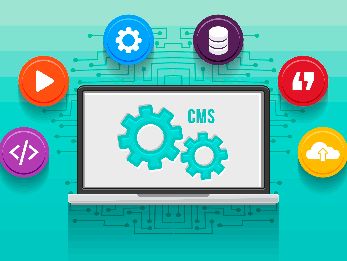Discover the Top 20 Web Development Tools
7 mins | 05 Sept 2023

Table of Contents
1. Introduction
2. Top 20 Web Development Tools
3. Conclusion
Introduction
When you're working on building websites, having the right tools are necessary. It doesn't matter if you're new to this or a seasoned pro; there are tools out there that can help you work smarter. Those tools create amazing websites with little effort.
This blog will walk you through the top 20 web development tools. These tools will make your website development easier and your website more impressive.
Top 20 Front-End Development Tools
A) Code Editors
Good code editors are necessary when you're developing a website or application. There are lots of options for creating a website, but a few stand out:
1. Visual Studio Code:
An easy code editor beloved by developers for its extensive library of extensions. With intelligent code completion and debugging features, it turbocharges coding tasks. Its adaptability makes it a top choice for efficient web development.
Pros:
- Smart Sense:
Offers intelligent code completion, code suggestions, and auto-formatting, speeding up coding.
- Extensions Marketplace:
Boasts a vast library of extensions for languages, frameworks, and tools, allowing customization based on website needs.
- Integrated Terminal:
Allows developers to run commands within the editor. It eliminates the need to switch between many applications.
Cons:
It consumes more memory due to its extensive features. It might be an issue for computers with limited resources.
2. Sublime Text:
A lightning-fast website editor known for its minimalist website design. Perfect for distraction-free coding, it offers powerful customization options. Its speed and simplicity make it a preferred choice for developers.
Pros:
- Speed:
Renowned for its blazing-fast performance, making it ideal for quick coding sessions.
- Multiple Selections:
Enables simultaneous editing of many lines. It is a huge time-saver for repetitive tasks.
- Distraction-Free Mode:
Provides a minimalist interface, reducing clutter and improving focus.
Cons:
The free version has limited features, and the premium version comes with a one-time cost.
3. Atom:
Crafted by GitHub, Atom is a code editor with a thriving community. Its customizable interface integrates with version control systems. It is Perfect for both freshers and experienced developers. Atom empowers efficient coding and collaboration in web development.
Pros:
- Hackable Interface:
Developers can customize almost every aspect of Atom, making it adapt to their needs.
- Package Manager:
Features a built-in package manager to install add-ons and extensions.
- GitHub Integration:
Seamlessly Integrates with GitHub, enhancing collaboration on code projects.
Cons:
It can be slower than other editors, especially when dealing with larger files.
4. Brackets:
Brackets is a free code editor made by Adobe, for making the front part of websites. It has cool things like changing the code right where you see it and seeing how it looks as you work. It's great for making web designs look awesome, and it makes coding easier with its special tools.
Pros:
- Live Preview:
Offers an instant preview of changes made to HTML and CSS files in the browser.
- Extract:
Simplifies the extraction of design information from PSD files into CSS.
- Extension Support:
Allows users to extend its functionality using extensions available in the Extension Manager.
Cons:
Lacks some advanced features compared to more comprehensive editors.
B) Version Control development tools
Effective collaboration and code management are essential for any website development project. Version control tools facilitate this process:
5. Git:
Git is like a strong foundation for keeping track of changes in modern development. It helps developers work together, go back to older versions of their work, and make changes without any trouble.
Git is super useful for managing code projects, making teamwork smooth, and keeping things organized.
Pros:
- Distributed Version Control:
Enables multiple developers to collaborate efficiently on the same project.
- Branching and Merging:
Supports easy creation of branches for different features and seamless merging of changes.
- Commit History:
Allows tracking and reverting to previous versions, aiding in debugging.
Cons:
Has a steeper learning curve for beginners.
6. GitHub:
A web-based platform built upon Git, GitHub revolutionizes collaborative coding. It offers tools like issue tracking, pull requests, and code reviews, enhancing teamwork and code quality. Developers can share, discuss, and manage code. GitHub is a central hub for collaborative web development projects.
Pros:
- Remote Repository Hosting:
Provides a platform to host Git repositories online and facilitates collaboration.
- Pull Requests:
Simplifies the process of reviewing and merging code changes from different contributors.
- Issue Tracking:
Offers a built-in issue-tracking system to manage and focus on tasks.
Cons:
Some features are only in the paid plans, making them less accessible for small enterprises or individuals.
7. Bitbucket:
Similar to GitHub, Bitbucket provides Git and Mercurial repositories. Its integration with JIRA simplifies project management. Bitbucket provides a place where teams can work together, see changes, and look at code. This helps to make sure everyone works together and keeps track of different versions.
Pros:
- Integration with JIRA:
Seamlessly integrates with Atlassian's project management tool for enhanced collaboration.
- Private Repositories:
Offers free private repositories, making it suitable for individual projects.
- Access Control:
Provides fine-grained access control to repositories, enhancing security.
Cons:
The interface might be slightly less intuitive compared to other version control platforms.
C) CSS Preprocessors
CSS preprocessors help developers write cleaner and more maintainable stylesheets. Two widely used options are:
8. SASS:
Syntactically Awesome Style Sheets (SASS) elevates CSS by introducing variables, nesting, and modularity. It streamlines the creation and maintenance of styles. It also makes web design more efficient and adaptable. With SASS, developers can enhance their workflow. They can also create stunning and organized websites with ease.
Pros:
- Variables and Mixins:
Allows reuse of code snippets, improving maintainability and reducing redundancy.
- Nesting:
Simplifies the nesting of CSS selectors, leading to cleaner and more organized stylesheets.
- Modularity:
Supports breaking styles into smaller, manageable files, enhancing organization.
Cons:
Requires a compilation step, which might add complexity to the development workflow.
9. LESS:
Leaner Style Sheets (LESS) makes CSS easier by adding things like special names, tools, and mix-and-match ideas. This helps make the code better organized and less repeating. People who make websites can create neater stylesheets. These neater stylesheets are easier to take care of. This leads to websites that look nice.
Pros:
- Variables and Mixins:
Similar to SASS, LESS offers reusable code blocks for easier maintenance.
- Dynamic Behavior:
Supports dynamic behaviours like calculations within style definitions.
- Simplicity:
Often considered more accessible for beginners due to its simplicity.
Cons:
Lacks some advanced features present in SASS.
D) Front-End Frameworks
Front-end frameworks provide a solid foundation for building responsive and visually appealing websites:
10. Bootstrap:
Bootstrap is a flexible front-end toolkit. It is known for its grid system and many building blocks. It helps create websites that look good on any screen and have lots of parts to use. By using Bootstrap, people build mobile-friendly websites.
Pros:
- Responsive Grid System:
Provides a flexible grid layout system that adapts to various screen sizes.
- Component Library:
Offers a wide range of pre-designed UI components, saving time in development.
- Customization:
Allows developers to tailor the framework's design to match the project's aesthetic.
Cons:
Recognizable Bootstrap design elements might lead to a less unique appearance for websites.
11. Foundation:
A front-end framework prioritizing mobile-first development. It offers responsive design templates and UI components for crafting dynamic web experiences. With Foundation, developers can create visually appealing and adaptable websites. Those websites work seamlessly across different devices, enhancing user engagement and interaction.
Pros:
- Mobile-First Approach:
Prioritizes mobile responsiveness, making it ideal for modern web development.
- Flexibility:
Provides a flexible grid system and customization options to meet unique design needs.
- Accessibility:
Focuses on creating accessible designs out of the box.
Cons:
Less beginner-friendly than some other frameworks due to its extensive customization options.
E) Back-End Development Tools
Back-end development powers the functionality of web applications. Here are some popular server-side languages:
12. Node.js:
Node.js works with Chrome's V8 engine. It lets developers make big network apps using JavaScript on the server side. It helps to make the website’s performance good and fast.
Pros:
- JavaScript Everywhere:
Allows developers to use the same language on both the front end and the back end.
- Non-Blocking I/O:
Supports asynchronous programming, improving the application's performance.
- Vast Package Ecosystem:
Offers a vast collection of open-source packages and modules through npm.
Cons:
Not suitable for CPU-intensive tasks due to its single-threaded nature.
13. Python (Django, Flask):
Python is great for making websites because it's easy to read and can do many things. There are tools like Django and Flask that make it even better. Django helps make strong websites with lots of features, and Flask is simple and can do a lot of things. Both of them help developers make things that work well and are easy for users, all using Python's magic.
Pros(Django):
- Batteries Included:
Django comes with a plethora of built-in features for common web development tasks.
- Admin Interface:
Provides an admin panel for managing application data without writing custom code.
Cons (Django):
Learning curve might be steeper for beginners due to its comprehensive nature.
Pros (Flask):
- Lightweight:
Offers a minimalist framework suitable for small to medium-sized applications.
- Flexibility:
Developers have more control over the components they use.
Cons (Flask):
Might require additional packages for certain functionalities due to its minimalist nature.
14. Ruby on Rails:
Ruby on Rails is famous for its neat way of writing and setting things up. It makes building web apps with databases faster. It helps developers to write code and try out ideas. So they can make cool web apps that do a lot of stuff without much trouble.
Pros:
- Convention Over Configuration:
Simplifies development by establishing sensible defaults.
- Rapid Development:
Offers a wide range of built-in tools for generating code and scaffolding.
- Active Record:
Provides an object-relational mapping (ORM) system for database interactions.
Cons:
May have a steeper learning curve for developers unfamiliar with Ruby.
F) Databases
Databases are the backbone of web applications, storing and managing data. The following options cater to different needs:
15. MySQL:
MySQL is like a helpful tool for keeping and handling information in web apps. It's known for being fast, trustworthy, and easy to use. It helps web apps talk to and store data in a good way. People like using MySQL because it's great at working with data in lots of different web projects.
Pros:
- Relational Database:
Supports structured data storage with robust data integrity and querying capabilities.
- Performance:
Known for its speed and efficient handling of complex queries.
Cons:
Scaling can be challenging for high-traffic applications.
16. MongoDB:
A NoSQL database that excels in handling unstructured and evolving data. Its flexibility and scalability are well-suited for projects with changing requirements. MongoDB stores data in a document-oriented format, making it ideal for web applications that require adaptable and efficient data storage solutions.
Pros:
- NoSQL Database:
Enables storage of unstructured or semi-structured data, offering flexibility.
- Scalability:
Designed for horizontal scaling, making it suitable for rapidly growing applications.
Cons:
Lack of ACID compliance might not suit applications requiring strict data consistency.
G) API Development
APIs (Application Programming Interfaces) enable seamless communication between different software components. These tools simplify API development:
17. Postman:
Postman is a helpful tool for trying out and explaining APIs. It makes it easier to make, try, and fix APIs. Using its simple design, developers can ensure that different parts work together.
Pros:
- API Testing:
Provides an intuitive interface for testing APIs with various request types.
- Collections:
Allows grouping of API requests into collections, aiding in organization.
- Mocking:
Supports creating mock servers to simulate API responses during development.
Cons:
More suitable for API testing than full-blown API development.
18. Swagger:
Swagger makes a regular way to plan and explain APIs. It is now called the OpenAPI Specification. It helps developers and others to work together & better by giving clear documents about how the API works. Using Swagger, it's easier to make and track APIs.
Pros:
- API Documentation:
Generates comprehensive and interactive documentation for APIs.
- Design Tools:
Offers tools to design and visualize API specifications before implementation.
- Code Generation:
Supports generating server and client code in various programming languages.
Cons:
Learning curve for using its advanced features effectively.
H) Browser DevTools
Browser developer tools are a developer's best friend for debugging and optimizing web pages. Leading the pack are:
19. Chrome DevTools:
A set of built-in tools in the Google Chrome web browser for debugging and optimizing web pages. It allows developers to inspect and modify the code, analyze performance, and diagnose issues in real time. Chrome DevTools is an essential resource for enhancing the quality and functionality of web applications during development.
Pros:
- Elements Inspection:
Allows visual inspection and modification of HTML and CSS in real time.
- Performance Analysis:
Offers performance profiling and analysis tools to optimize web page speed.
- Console:
Enables logging and running JavaScript commands for debugging purposes.
Cons:
May have a slight learning curve for beginners.
20. Firefox DevTools:
Just like Chrome DevTools, Firefox DevTools gives web developers a set of tools to look at, fix, and make web pages better. These tools are part of the Mozilla Firefox browser. It also helps to find and fix problems, make things work faster, and make sure web apps work well.
Pros:
- Responsive Design Mode:
Provides a range of screen sizes and resolutions to test responsive layouts.
- Network Monitoring:
Offers insights into network requests and performance bottlenecks.
- Accessibility Inspector:
Helps identify and fix accessibility issues in web content.
Cons:
Less widely used compared to Chrome DevTools.
Conclusion
When building websites, having the appropriate tools is essential for improving things. So they cannot get stuck and frustrated.
These 20 web development tools can help with everything. From writing code to testing, managing projects, and keeping track of changes.
With these tools, developers can feel more confident about creating web apps. So they can make websites better for users.
So, why wait? Start using these web development tools and see how much easier your work becomes. Your next great creation is just a few clicks away!
Author







